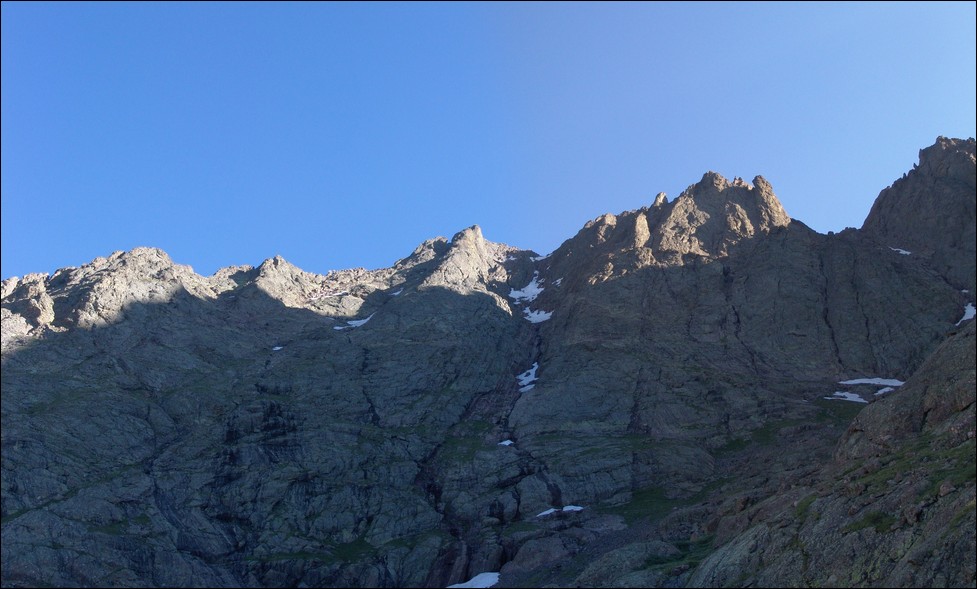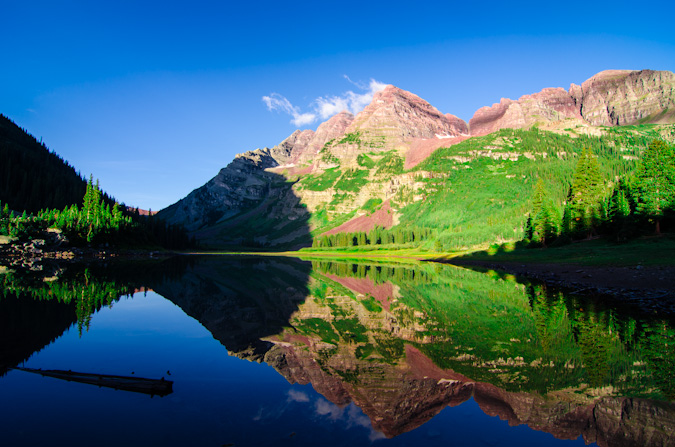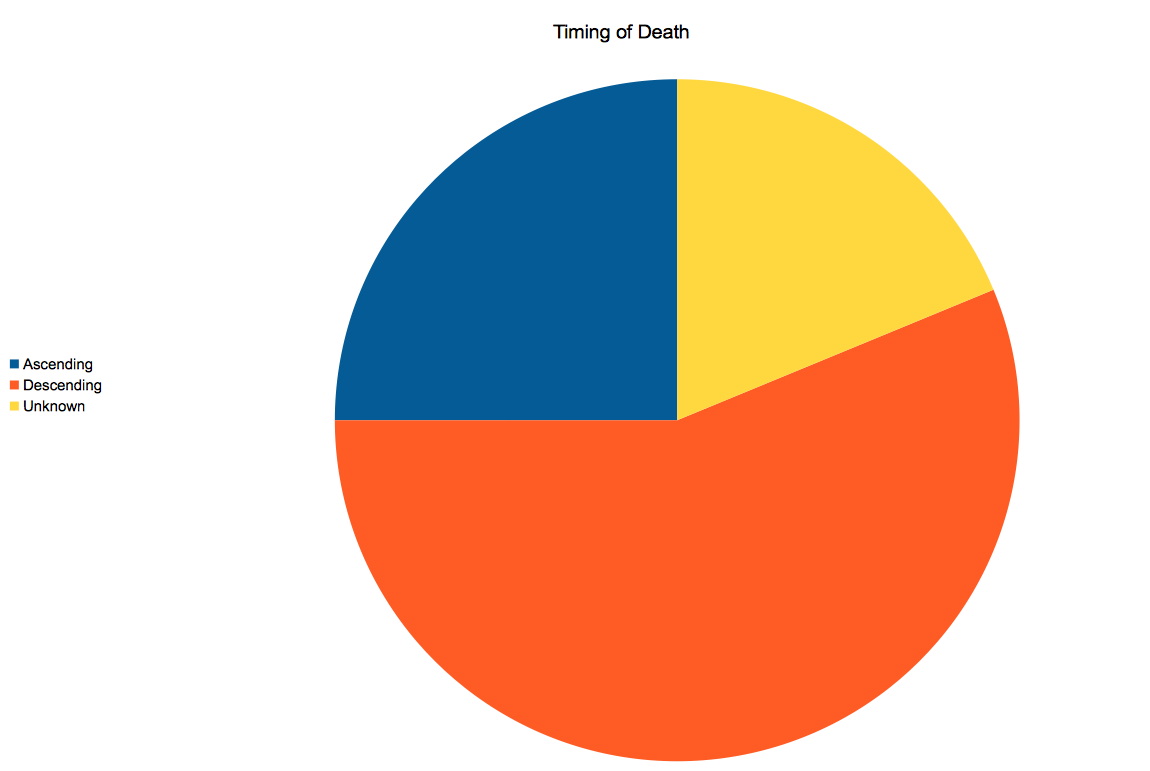
- Introduction
- Martin Pigeon - Windom Peak - 7/10/2012
- Clinton McHugh - Mount Bierstadt, Sawtooth Ridge - 7/12/2012
- Philip Gahn - Andrew's Glacier, Rocky Mountain National Park - 7/13/2012
- Lenny Joyner - North Maroon Peak - 7/19/2012
- Rob Jansen - Snowmass Mountain / Hagerman Peak - 8/25/2012
- Chris Gray - Crestone Peak - 8/29/2012
- Derek Kelley - North Maroon Peak - 9/15/2012
- Summary / Data / Charts / Common Themes
As many people may recall, I threw in the towel in 2013. I made a very difficult decision to stop writing about Colorado's mountaineering deaths. I was right in the middle of trying to learn the details one of the major tragedies of 2012 - Robert Jansen's death on Hagerman Peak. I was in contact with the climbers that were with him on that tragic day, a full year after the accident, and the responses I received changed the way I thought about things. I could feel the pain and anguish in their responses. I could tell, that by asking questions about the accident, I was just digging up old wounds that best lay hidden from the world to heal. I had to respect that feeling inside of me - that gut wrenching pang that I realized that my acts were causing another human being significant harm. I announced my decision and received quite interesting feedback. To my surprise, the community found value in my research and my posts, despite the sensitive and delicate nature of the topic. I even received phone calls from people I'd never met before, imploring me to continue writing. At the time, it was just too much to handle, so I put a stop to the articles.
Fast forward to 2014 - I've since moved to Oregon and have put significant distance between myself and the topic. I've been able to think objectively about these articles and about their value, and their potential to cause harm. I've read and re-read the post I put up on 14ers.com (linked above) and keep coming back to the same conclusion - there is value in providing this information, if done the right way. Given that conclusion, I have decided to publish the data I've collected since 2011, which is significant. It will come in two installments, one here in this article, for 2012, and one in another article for 2013. I have also decided to make some significant changes in the type of information shared here. No longer will I be conducting a formal analysis, rather, a short account of known details with any obvious linkages to cause made apparent, as well as a statistical summary. It is quite difficult to walk a fine line between 1) honoring those who have died, 2) educating the general public to the dangers of the mountains and 3) showing respect to the friends and families of the deceased; however, that is my goal. The hardest part is accurately reporting the details of the story without inflicting pain on the survivors. I am committed to attempting to maintain this delicate balance. I feel like this will strike a balance between the need for sensitivity as well as the need for information. Since my 2013 thread on 14ers.com prompted the creation of an entire new category of discussion for accident analysis, my hope is that those topics will serve that function instead. Without further ado, here are the stats for 2012...
2012 started out very slowly and favorable in terms of Colorado mountaineering deaths. Through mid-July there had only been 3 deaths, half as many over the same period of time from the prior year. Fortunately, the pace stayed the course and we ended the year with 7 deaths, 5 less than last year. While no entity keeps official records of mountaineering deaths in Colorado, the American Alpine Club publishes its annual Accidents in North American Mountaineering (ANAM) book, which highlights every known accident and death in North America as well as providing meaningful statistics, broken down by State and type of accident. The scope and purpose of that book is for mountaineers to read about accidents and to learn from them. Through analyzing what went wrong in each situation, ANAM gives experienced and beginning mountaineers the opportunity to learn from other climbers' mistakes. From inadequate protection, clothing, or equipment to inexperience, errors in judgment, and exceeding abilities, the mistakes recorded in the book are invaluable safety lessons for all climbers.
The purpose of these articles on 100summits.com is to focus more on Colorado Mountaineering specifically, provide probable causes for each death, if possible, and to collect data that may prove useful in the future. It is also a goal that this website may serve as a historical reference for Colorado Mountaineering Accidents - at least 2010 and forward.
The philosophy is that each mistake, accident or unfortunate event has a valuable lesson attached to it. We also believe that even simple coincidences or freak accidents, where no fault can be laid upon the mountaineer, can be studied. Perhaps in reading about one of these such accidents, other climbers may decide to avoid that mountain or take extra precautions when attempting to climb it. Additionally, most of us that climb mountains do so with the knowledge that it is dangerous and that accidents can and will occur. The only thing we can do to mitigate that risk is to educate ourselves, learn from others, and prepare as much as possible. The hope is that this continued work is a small means to that end.
1. Martin Pigeon - Windom Peak - 7/10/2014

According to the The Denver Channel, Martin perished while descending Windom Peak during a rain and hail storm. Windom Peak is certainly one of Colorado's more rugged 14ers. His body was recovered after he died trying to climb 20 peaks in Colorado over three weeks. Pigeon and his climbing partner Marcoux Yves, made ascents of the three Chicago Basin 14ers and were descending Windom Peak when thunderstorms moved into the area, with hail and lightning. The two became separated on the descent and Pigeon was not in camp when Yves reached it. Yves returned and looked for Pigeon, finding his body at the base of a cliff at 13,300 feet. Officials estimate Pigeon fell about 230 feet.
Cause
Martin's death was caused by falling during his descent of Windom Peak. It would seem that weather played a factor in his death. This particular death rang true for me, personally, as I encounted similar weather during the start of my ascent of Windom Peak in 2011 and decided to turn back and re-climb it the following day. Just like Martin, I had summited Eolus and Sunlight prior to Windom and ran out of time. The weather in Chicago Basin can form quite quickly, faster than other parts of Colorado in my experience.
2. Clinton McHugh - Mount Bierstadt, Sawtooth Ridge - 7/12/2014
According to the Denver Post, Clinton perished while traversing from the summit of Mount Evans to the summit of Mount Bierstadt on the infamous Sawtooth Ridge; and, according to my research, was the second mountaineering victim of 2012. According to the Alpine Search and Rescue Team, it is believed that Clinton summitted Mt Bierstadt around 10:00am and called his wife from the summit. A second call from Clinton to his wife was made around 12:45 from the summit of Mount Evans but did not go through. It is believed that Clinton was returning to the summit of Mt Bierstadt later that afternoon. From the National Weather Service it is understood that a severe thunderstorm occurred in the area on Tuesday afternoon.
Cause
Clinton's death was caused by falling during his traverse across The Sawtooth. Death on this route is not uncommon, especially early in the season or during inclement weather. In fact, a similar death occured in 2011 on the same ridge. It is not known if weather played a factor in Clinton's death; however, it cannot be ruled out and could serve as a reminder to other climbers wishing to traverse via the Sawtooth to keep an eye on the weather before committing to the traverse.
3. Philip Gahn - Andrew's Glacier, Rocky Mountain National Park - 7/13/2012
According to the Denver Post, Philip perished while descending Andrew's Glacier in Rocky Mountain National Park and, according to my research, was the third mountaineering victim of 2012. It is still unknown, as far as I can tell, what the nature of the accident was.
Cause
Gahn's death was caused by a fall into rocks below the glacier; however, no information is available as to what caused the fall itself.
4. Lenny Joyner - North Maroon Peak - 7/19/2012

According to Aspen Daily News, New York resident and paramedic Lenny Joyner, 31, was found dead between 11,000 and 12,000 feet on the north aspect of North Maroon Peak. He apparently had fallen about 500 feet into a scree field on his descent from the more than 14,000-foot peak. He had been missing for several days, when he posted online that he had summited South Maroon Peak at 10:06 a.m. on 7/19/12. He successfully made it across to North Maroon, according to 14ers.com, where another climber took a photo of Joyner’s registry entry at the peak. After Lenny's death, 14ers.com member, "Rock-A-Fella," retreived the summit register and sent it to the New York Fire Department where Lenny worked. It is believed that the summit register hangs there to this day.
Cause
Lenny's death was caused by a fall. This is a very common occurrence on the Maroon Bells. Indeed, the Maroon Bells have seen several fatalities in the short amount of time I have been keep tracking of deaths in Colorado, and are famously two of the most dangerous mountains in Colorado. This particular story hit home for me, as I was just learning about it as I was preparing to leave on my own adventure to climb South Maroon and Pyramid just six days after his death. In Lenny's case, he ascended Maroon Peak, traversed to North Maroon, and then descended the wrong gully and fell. The only other thing that can be said about the Maroon Bells here, which most people should already know, is that they are incredibly loose and dangerous. Take caution as accidents there are common.
5. Rob Jansen - Snowmass Mountain / Hagerman Peak - 8/25/2012

Of any of the Colorado Mountaineering Deaths of 2012, I believe that this one hit the climbing community the hardest. Rob was an incredible athlete, was very close to finishing the 14ers and a regular attendee at 14ers.com gatherings. Rob perished during a fall and/or rock slide while attempting the traverse to Hagerman Peak from Snowmass Mountain. The outcry of support and grief after his death was incredible. Details from this accident are spread all over the internet, and it would seem that no one source has the story exactly right on the dot. Indeed, one of Rob's climbing partners that was there during the accident refuted many of the details made in online reports. I reached out to the group that was with Rob on this tragic day and was met with a great deal of grief, shock, disbelief and anger. This is not a surprise, and I can only begin to imagine how difficult it must be to live with something like this. While we may never know the details of this accident, the dangers of the Snowmass-Hagerman traverse have been well documented.
Cause
Rob perished from a fall caused by a rock slide. The Elk Mountains are notorious for their loose rocks and high danger. Indeed, I've climibed both Snowmass Mountain and Hagerman, one day apart, and can attest to the dangers that can be encountered there. I do recall looking across to Hagerman from Snowmass and thinking for a split second that the traverse looked fun, and then I had a reality check - that traverse looks and is absolutely difficult, dangerous and flat out risky. Attempt at your own risk. Lastly, it should be noted that routes that are rarely climbed tend to be more prone to rockfall, so it is important to keep that in mind when attempting obscure routes.
6. Chris Gray - Crestone Peak - 8/28/2012

According to Custer County Search and Rescue, and the accounts of Chris' climbing partner, his wife Taylor, Chris died in a fall while attempting to climb Crestone Peak's North Buttress. The dangers of the Crestones have been well documented here and elsewhere, and a fall on most of this route would almost always prove fatal.
Cause
Chris perished due to a fall from Crestone Peak's steep and often deceptively loose rock face. According to his wife, "Chris was not rushing, running or doing anything foolish. He even was wearing a helmet. He simply lost his hands and fell 200ft unto his head and died on contact."
7. Derek Kelley - North Maroon Peak - 9/15/2012

According to CBS Denver, Derek Kelley fell 600-1000 ft. to his death after losing his footing. Kelley fell when a boulder came loose, according to Eric Hansen, Pitkin County deputy coroner. According to eyewitnesses, while he was climbing up the crux chimney he had trouble negotiating the very top. There was a loose rock that came off and he fell. His momentum took him over the side of the ledge below.
Cause
The crux of North Maroon is nothing but loose and exposed. Pulling on the wrong rock with all of your weight can and does prove to be fatal, as demonstrated by this accident. When climbing in the Elks, extra precaution should be taken to ensure that all hand-holds and foot-holds are stable. Even with the utmost care, a rock can and will fall. There is no evidence that Derek did anything negligent in his accident; however, it was noted that he was climbing alone - but that fact did not exacerbate his accident in any way.
Summary / Data / Charts / Common Themes
While 2012 was not nearly as deadly as 2011 or 2010, it still marked the passing of 7 truly great people that will surely be missed by friends and loved ones. Surprisingly, there were no deaths on Longs Peak this year; however, fatalities at Snowmass/Hagerman, the Crestones, Rocky Mountain National Park, as well as the Maroon Bells are continuing to be a trend.
My hope is that the data I track through this painstaking annual endevour will become useful someday for research or for education purposes. Perhaps someday an organization will use this data to fund a new education program at the Park Service or some other organization.
The first table I'd like to present this year is the Colorado Mountaineering Deaths by Mountain 2010 - 2012. If the table is hard to read, feel free to click on it to see a larger version.
As you can see, Longs Peak, the Crestones, the Maroon Bells, Kit Carson Peak and Snowmass Mountain are the most dangerous mountains in terms of the number of accidents.
The second table I'd like to share is a count of the type of accidents:
Clearly, the leading cause of death in Colorado Mountaineering accidents from 2010 - 2012 were falls.
Next, I'd like to share the table that shows a count of the contributing factors for the Colorado Mountaineering Deaths - 2010 - 2012:
Lastly, the data that I think might be interesting to examine is whether the death occured during ascent or decent:

I think that this data will become more and more interesting as the years progress, and will give educators, policy makers, and other groups some ammunition to begin targeting various interventions that would hopefully reduce the number of accidents per capita for Mountaineering Accidents.
If you have any comments or concerns about the data or ideas on other data points to start tracking, please leave a comment below. Additionally, if there are discrepancies in the information I provided above, please leave a comment so I can fix it.




